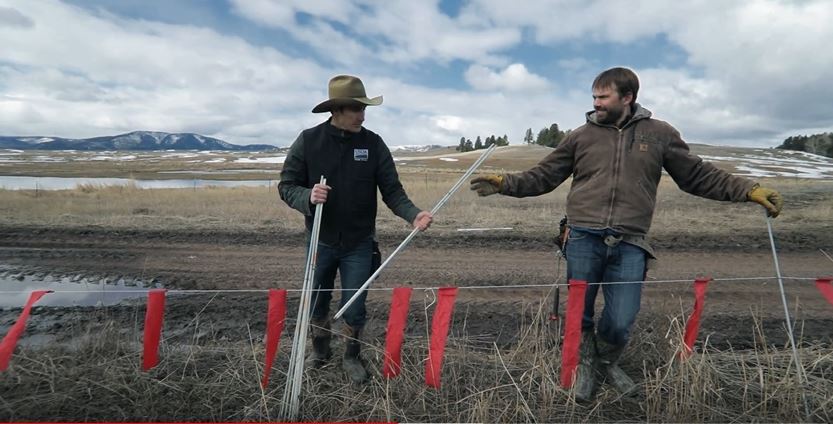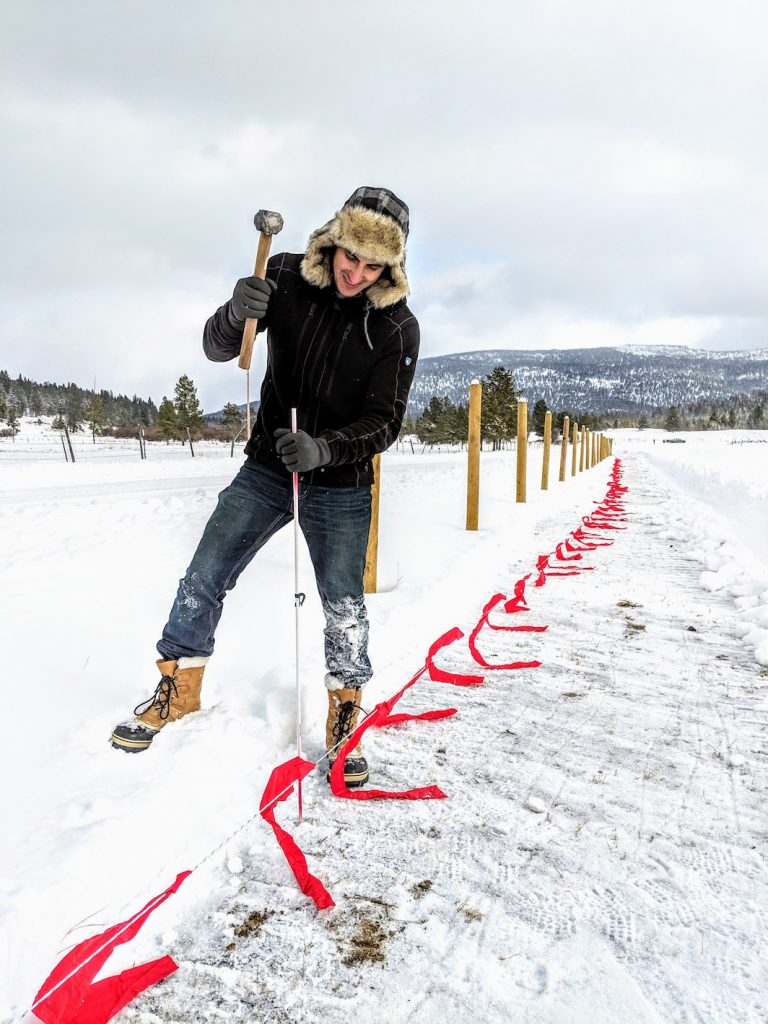An Old Tool Protecting New Calves
By Adam Baca, Montana Wildlife Services

A tool originally developed for hunting wolves is an option for protecting livestock from them, through a public-private partnership in big sky country.
In Montana, livestock producers can protect their stock from wolves by removing the wolves if they observe them around their herds. Several long-time ranchers have pointed out that the odds of seeing a wolf – and having everything come together to remove that animal – are pretty low. So “permission to take” doesn’t do much good. USDA Wildlife Services’ Specialists can lethally remove wolves by trapping and aerial gunning, but only after confirmed predation by wolves. That leaves the question of what can be done to protect livestock before they are injured or killed by predators. No surefire solutions exist, but ranchers have some options to try, including turbo fladry (referred to as fladry).
All about fladry
Fladry originated in Eastern Europe as a tool to hunt wolves. People strung lines of string with cloth hanging off to funnel wolves toward hunters. The wolves would rarely cross those lines. Modern fladry has evolved to protect livestock, while limiting maintenance – made of polywire with hanging red nylon flags.
The polywire is attached by insulators to fiber glass rods driven into the ground. The fladry polywire is leveled at about nose height to a wolf and electrified with about 8,000 volts of electricity. Flags spook the wolves, and if/when they go to investigate the fladry or test boundaries, the electricity reinforces the visual deterrent with a hard electrical shock.
Turbo fladry is a temporary measure, only useful for 60-120 days so wolves do not habituate to it. Set up/takedown of fladry takes a full day with weekly maintenance averaging 2 hours so the additional work placed on the livestock owner is minimal. Fladry is not a cure all, and its use is limited by the size of the pasture where it can be used. It is meant to be used alongside existing tools/methods, but because of its effectiveness, is currently being used by USDA Wildlife Services in Oregon, Wisconsin, New Mexico, and here in Montana, with good results.

Partnership offers cost-share to producers
This protection is why the Montana Livestock Loss Board and Wildlife Services partnered, along with other organizations in Montana, to cost share with producers to deploy this tool. Through this program, fladry can be put out to add a line of defense for livestock and give livestock producers another tool to increase ranch resiliency, not to mention help with peace of mind.
Obviously, there are more details to understand, and no producer situation is the same. That’s why USDA Wildlife Services has conflict prevention specialists dedicated specifically to doing this work and answering these questions. Each rancher can get expert assistance in properly installing turbo fladry and other electric fencing applications with a government cost-share. Call any time.
Contact information
Adam Baca – Montana Wildlife Services
406-360-1476
Alyssa Mahaney – Oregon Wildlife Services
541-900-4896
1 Comment
Join WLA to stay up to date on the most important news and policy for land stewards.
Become a member for free today and we will send you the news and policy developments critical to the economic and ecological health of working lands.
WLA works on behalf of landowners and practitioners throughout the West. We will never share your contact information with anyone.
©2025 Western Landowners Alliance • PO BOX 27798, Denver, CO 80227 • 505.466.1495
Western Landowners Alliance is a 501 (c)(3) non-profit recognized by the IRS.
Tax ID: 46-1346488
Great article and we are very Thankful for the fladry. It has worked wonderfully. It was a big eye opener after installing this system and setting game cameras out, just how well it works. Just about every night during calving season there were wolves outside the parameter of the fladry but not one calf lost. It’s simple to install and takes very little maintenance, just eyeing it to make sure it hasn’t been knocked down and keep the flags from tangling. Maintenance is easy and we usually handle it during feeding time so no time lost.
Thank you!!!